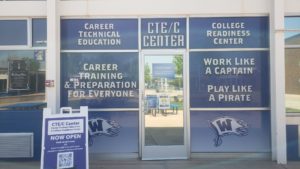E-Blast July 2022
 Please join Chabin Concepts and Dr. Robert Eyler for an update on the national and state economy in California, and a reflection on where the economy may be headed given the recovery momentum and headwinds such as growing housing prices, rising interest rates, and global tensions.
Please join Chabin Concepts and Dr. Robert Eyler for an update on the national and state economy in California, and a reflection on where the economy may be headed given the recovery momentum and headwinds such as growing housing prices, rising interest rates, and global tensions.
July 25, 2022 (8:30 am)
Participants have an opportunity to ask questions at the end of Dr. Eyler’s presentation.
By registering for this 30-minute webinar, you will automatically receive a reminder and a link to future webinars.
CCC Tech Connect July Webinar
Date: Friday, July 15th
Time: 12 noon
Is your District still using the ConferZoom in Canvas?
If so, this webinar is for you!
CCC TechConnect Zoom is focused on providing our colleges with the best service and support to all users. As part of our ongoing efforts, we will optimize the network for better performance, requiring Districts using ConferZoom in Canvas to migrate to their own District Zoom sub-accounts.
This webinar will present:
- An overview of the changes to expect for faculty/staff.
- A live demonstration of the new tools in Canvas for faculty
- Opportunities for your questions and our answers
Join us for this informative webinar and be prepared for the changes you’ll see in Zoom this fall! There will be time at the end to answer questions.

Vision in Action
A new Dual Enrollment online class and a Dual Enrollment Community have launched in the Vision Resource Center to assist professionals working in or interested in supporting this program.
Dual enrollment programs provide students the unique opportunity to enroll in community college courses and allow students to earn credits toward both a high school diploma and a college degree. Participation can assist students in preparing for the rigors of college coursework and have been shown to improve graduation rates. On average, dual enrollment students demonstrate a 7% increase in high-school graduation, a 15% increase in college enrollment and a 25% increase in subsequent college graduation as compared to students who are not in a dual enrollment program, according to the combined results of five studies of dual enrollment that met the highly rigorous design standards of the Institute for Education Science’s What Works Clearinghouse.
The Dual Enrollment online class reviews the different models and target populations of the program including College and Career Access Pathways (CCAP), Non-CCAP, Middle College High School and programs for adult learners. Also included are brief overviews of the legislation related to dual enrollment and additional resources supporting effective program implementation. In addition, the Vision Resource Center also offers the Supporting Students Through Dual Enrollment online class, which is part of the New Directors Learning Series.
The Dual Enrollment Community is a space to collaborate, continue conversations, share promising practices and resources and receive the latest updates on dual enrollment. The questions sparked in the online class, or at the upcoming 9th Annual California Coalition of Early and Middle College Dual Enrollment Summit in September, can be answered in the community for a more holistic learning experience.
 The North/Far North Center of Excellence is sharing a quarterly report on job postings, unemployment, industry measures, and other real-time data. The COE sends out a condensed version of the economic update in the COE North/Far North newsletter and a separate COE North/Far North newsletter.
The North/Far North Center of Excellence is sharing a quarterly report on job postings, unemployment, industry measures, and other real-time data. The COE sends out a condensed version of the economic update in the COE North/Far North newsletter and a separate COE North/Far North newsletter.
The COE economic update will come out in the COE newsletter and be posted to the North/Far North regional consortium website during the second week of July.
Sign up here to receive the economic update and COE newsletter.
SUMMARY
The region, like much of the nation, is experiencing historic low unemployment. The data does not yet show signs of a cooling labor market or layoffs. Key findings are as follows:
Unemployment— In the Greater Sacramento (North) region in May, the average unemployment rate was 3.0%. In the Far North, the average rate declined to 3.5%. The rate in California was 3.8%
Labor Force— The North region’s labor force has risen steadily during the second half of 2021 and first half of 2022. In May, the labor force for the North was 3.3% above January 2018 levels. Overall, the Far North has not regained the labor force it lost during the pandemic. In May, the Far North’s labor force was 3.2% lower than in January 2018.
Industry Trends— Most sectors in the North/Far North have recovered from job losses experienced during the pandemic, but many have not experienced significant growth. These include retail, government, and health care. Hospitality has made a remarkable comeback, regaining most of the job losses from the pandemic. Construction and transportation and logistics have seen significant growth over prepandemic employment levels.
Jobs Postings— A quarterly analysis of jobs postings volumes shows that many sectors continue to increase jobs postings volumes beyond prepandemic levels. In recent quarters, many sectors routinely have 20% to 50% higher postings volumes than before the pandemic.
Report Spotlights—The COE released reports on Artificial Intelligence and Real Estate in the Greater Sacramento region. The economic update and newsletter summarizes key findings from the reports. To review these reports and other recent reports please visit the Greater Sacramento and Far North sections of the COE website:
https://coeccc.net/region/greater-sacramento/
https://coeccc.net/region/far-north/
Submitted by: Aaron Wilcher, Director, North/Far North Center of Excellence, WilcheA@losrios.edu

“I tell people, cooking is my passion — but teaching is my calling,” says Robert Cabreros, Woodland Community College Culinary Arts instructor for 15 years and counting.
“I was meant to be a teacher.”
Inspired instructors like Cabreros are driving the workforce in the Retail and Hospitality industry. Every year, community colleges award between 40 and 50 percent of all the culinary degrees in the country, firing up red-hot careers for chefs, bakers and restaurant managers.
Instructors are the meat and potatoes of two-year culinary programs, and just as in industry, there are never enough of them. Currently, one out of every 10 jobs in the Retail and Hospitality sector are unfilled, according to U.S. Department of Labor data, with more than 1 million jobs open.
More instructors are desperately needed to train increasingly in-demand professionals. And while the persistent need for teachers presents a never-ending challenge, it’s also a tremendous opportunity for those looking for a new and meaningful career.
According to Cabreros, the secret to finding his dream job was a pinch of serendipity and a dash of destiny. At the time, he worked as the executive chef at a local casino and was asked to help with a job shadowing event through Woodland Community College.
“I almost didn’t do it,” confesses Cabreros, who was shy of public speaking. But as he recalls, his boss said, “I’m not asking you to do this — I’m telling you.”
 While the world of work has transformed rapidly over the last 40 years, most K-12 schools haven’t kept up… and students know it. In a 2019 survey by the Ewing Marion Kauffman Foundation, while 84 percent of students felt like they were ready for college, only 60 percent were confident about careers.
While the world of work has transformed rapidly over the last 40 years, most K-12 schools haven’t kept up… and students know it. In a 2019 survey by the Ewing Marion Kauffman Foundation, while 84 percent of students felt like they were ready for college, only 60 percent were confident about careers.
That confidence comes with experience, and in the Wheatland Union High School District, it’s all part of the curriculum. With three cutting-edge learning centers anchoring career ed on campus, 100 percent of Wheatland students undertake an unconventional CTE curriculum.
“We really believe that it’s not a college or career choice — that it’s both,” says Superintendent Nicole Newman. Her philosophy is that while not every student may choose to go to college, every single one will have a career. Thus, career readiness is key.
The value of early CTE exposure is especially apparent among employers. According to industry partner and Comfort Keepers home care owner Neil Goforth, the boost in career readiness will be a boon for the region’s future talent pipeline for decades to come.
“We’ve heard too many times that employers have passed over our area due to lack of a skilled workforce,” says Goforth. He cites a dire need for students to have critical soft skills, including communication, customer service and a professional attitude — skills they will now learn at Wheatland.
“Putting kids on the path to being good employees is a perfect start.”